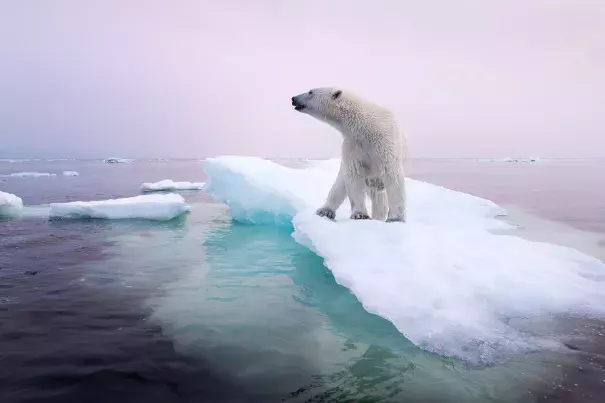7 Species Hit Hard by Climate Change—Including One That's Already Extinct

Climate change is doing "widespread and consequential" harm to animals and plants, which are struggling to adapt to new conditions, according to a major report released Monday.
The report, from the UN's Intergovernmental Panel on Climate Change (IPCC), finds that many life-forms are moving north or into deeper waters to survive as their habitats shift.
They're also being forced to change their behaviors. For instance, many birds are nesting, breeding, and migrating earlier as spring arrives sooner than before.
...
The losers, Alpert said, will likely be the species that are highly specialized in what they eat or where they live, especially those whose habitats disappear completely.
That might include species such as koalas, which depend mainly on eucalyptus for survival, and the many animal and plant species that live only on isolated mountaintops.
...
Bob Scholes and Hans-Otto Pörtner, both IPCC authors who contributed to the report's ecosystems chapters, agreed, in a joint statement to National Geographic, that the current human-made climate change is happening much faster than in the past. (See a map of global warming's effects.)
Scholes, a systems ecologist at the Council for Scientific and Industrial Research (CSIR) in Pretoria, South Africa, and Pörtner, an animal physiologist and marine biologist based at the Alfred Wegener Institute in Bremerhaven, Germany, highlighted six species that are already in decline due to climate change:
...
Polar bear. The large predator's story is well known: The Arctic sea ice on which the animals hunt is progressively disappearing during the summer. Sea ice is forming later in the fall and disappearing earlier in the spring. "As the Arctic sea ice retreats, polar bears have to exploit alternative food sources, such as on land," the scientists said, and some hungry polar bears have turned to goose eggs. But it's not the best alternative, Steven Amstrup, chief scientist for Polar Bears International, noted in a previous story. "Some media reports have suggested that this might mean polar bears could just come ashore and eat terrestrial foods and somehow do fine without the sea ice," Amstrup said. "We have absolutely no evidence that they have the ability to do this." (Read "On Thin Ice" in National Geographic magazine.)
Adélie penguin. These Antarctic birds mostly live on tiny crustaceans called krill. Krill live on the undersides of ice sheets, where they find refuge and algae as food. But as Antarctic sea ice retreats, krill populations are falling—meaning that the penguins have to migrate farther to find food. Spending a lot more energy to find food makes penguins less successful at breeding and raising young, the scientists said.
Related Content



